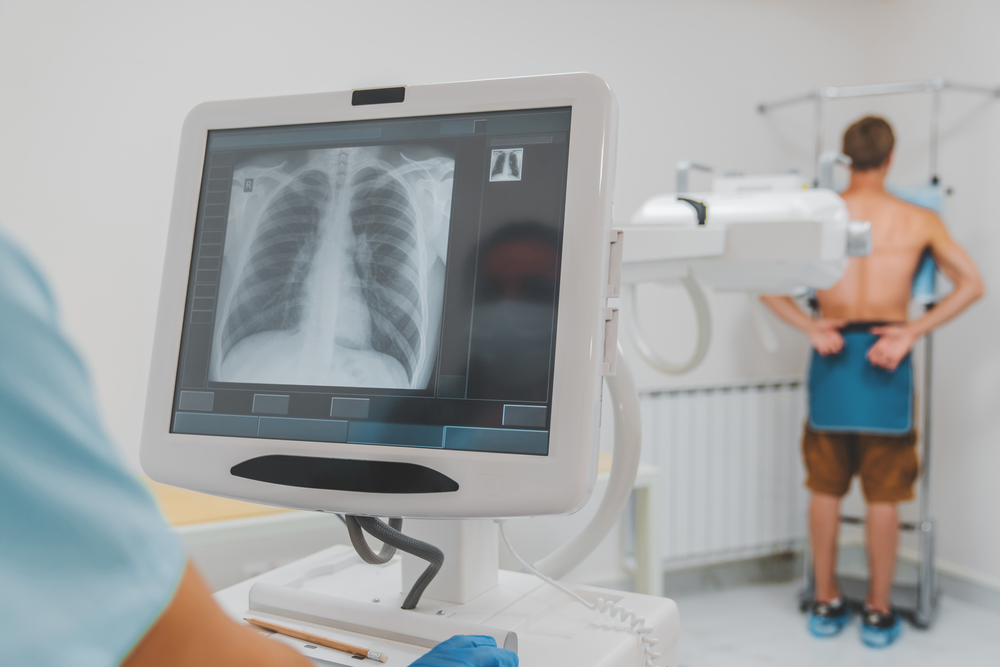Whether you’ve just had an X-ray or are expecting to have one soon, it’s normal to want the results as quickly as possible.
But how long will this actually take? The good news is that most doctors and practices, in general, try to get X-ray results to their patients as quickly as possible, but there is no set schedule for this.
The exact amount of time varies greatly depending on what part (or parts) of the body the X-ray was taken of, how busy the practice is, the medical conditions involved, how urgent the situation is, and the equipment itself.
It can therefore take anywhere between 15 minutes and 24 hours or even longer (in some cases, weeks) to get X-ray results back.
Table of Contents
What is an X-ray?
An X-ray is a form of radiographic imaging used in the medical world to examine the interior structures of the human body.

The method involves a focused beam of high-energy electromagnetic radiation on a specific area to produce an image.
These black-and-white images are used to analyze injuries and certain health conditions to assist with diagnosis and treatment.
The process of getting an X-ray itself is painless and considered a good alternative to manual examination and exploration in certain cases.
What parts of the body can be scanned with an X-ray?
The electromagnetic beams used in X-rays pass through the soft tissues of the body (skin, muscle, veins, etc.) and are absorbed by denser structures like bones and teeth.
Generally speaking, the denser the structure, the more radiation is absorbed.
This is why metal implants (like a replaced hip joint) will show up brighter than bones on an X-ray scan.
In some cases, X-rays are used to assess items that have been accidentally swallowed or foreign objects that have become otherwise embedded in the human body.
Can organs be X-rayed?
Yes, organs can be viewed via X-ray scans because they too absorb radiation (just in lower doses than bones).
Radiologists can use specially calibrated electromagnetic beams to view these softer tissues with more clarity.
X-rays in these cases are often used to detect abnormalities like cysts and tumors.

What are the different types of X-rays?
There are multiple kinds of X-rays today, and the amount of time they take varies based on the process:
- Conventional film – the “standard” X-ray used primarily for bones and teeth. It is processed with film and usually printed in hard copy, which can tack on extra time to the results.
- Computerized tomography or “CT” scan – this type merges traditional X-ray methods with computer digitalization, allowing medical professionals to view results within minutes. A CT scan can also be used to view cross-sections of the body and even create 3D images.
- Fluoroscopy – a type of “real-time” imaging where an X-ray source is paired with a fluorescent screen, with the patient positioned in-between. In more recent years, cameras have been added to record the imaging for later assessment.
- Angiography – this type involves the injection of a contrasting agent into the patient, allowing the X-ray to better target veins, arteries, and other small soft tissues. It is most commonly associated with the heart, and the prep time can take minutes longer than other forms of X-ray imaging.
- Mammography – a special kind of X-ray imaging intended just for breast tissue. It involves specialized scanning and positioning equipment to take multiple images in one session.
Who looks at X-ray results before the patient?
The first person to look at X-ray results is typically not the doctor treating the patient, but the radiologist conducting the scan.
Depending on the practice or hospital, they may then analyze the results themselves and share their findings with the doctor.
When it comes to more extensive injuries or complex health cases, X-ray results may be assessed by entire medical teams (including specialists) in order to determine the best course of action.
How long does it take to get an X-ray done?
The actual process of getting an X-ray done usually takes between 5 and 20 minutes, though some may take longer if extensive imaging is needed.

The actual X-ray scanning time depends on the size and shape of the area being scanned. For example, a chest X-ray may take a few minutes more than a leg X-ray because the patient needs to avoid breathing, and the scan may need to be re-done a few times for the best clarity.
Likewise, dental X-rays of the whole mouth may take several minutes due to the patient and equipment needing to be re-positioned for each side.
How long does it take for X-ray scans to be processed?
Processing an X-ray usually takes less than 10 minutes.
However, the physical X-ray image is processed on modern digital equipment (as opposed to film) almost instantaneously.
Most radiology practices use digital copies of X-ray results as well, which can be uploaded and transferred to the necessary medical offices within minutes.
However, this does not mean the patient will be able to view those results as quickly, since they will need to be analyzed first.
How long does it take medical professionals to analyze X-ray results?
The time it takes to analyze X-rays (before speaking with the patient) depends on the doctor’s workload as well as how complex the results may be.
A simple fracture or clean break in a femur may require less time to assess than multiple fractures in a hand, for example.
A doctor may also be juggling multiple patients and may need to take extra time to look at each person’s results.

When specialists are called in to view the X-rays, it can also result in delays for the patient. However, the purpose is usually to be able to provide them with more details and an action plan.
How long does it take to get X-ray results in the ER?
Emergency rooms prioritize patient X-ray processing and analysis based on the urgency of the medical condition.
If someone comes in with a head injury and needs an X-ray of their skull, for example, they are going to get the results as quickly as possible vs. a patient with a broken foot.
Generally speaking, ER X-ray results are processed within 5 to 15 minutes, though some situations may require more extensive analysis.
Is it possible for X-ray results to be wrong?
If X-ray images end up looking distorted or otherwise unclear, it is up to the radiologist or medical doctor to have them re-done for accuracy.
In most situations where X-ray results are considered “wrong,” it’s really the result of them being misread by the medical professional who assessed them.
This can cause delays in treatment for the patient.
Are X-rays safe for humans?
There has been much debate over the years in regard to the safety of X-ray imaging. However, modern machines use much lower doses of radiation to achieve even clearer results than past methods.
Furthermore, it’s worth noting that humans are exposed to radiation all the time just by living on Earth.
Protective aprons and drapes may be provided to patients as a precaution, but modern studies show that even larger images (like chest X-rays) only result in the equivalent of 2 days of normal radiation exposure.

Can a patient sue over slow X-ray results?
Some hospitals and practices may have patients sign waivers saying they won’t sue if their X-ray results take too long.
Theoretically, however, patients are within their rights to sue over just about anything they view as having harmed their health.
If delayed X-ray results mean vital treatment was not able to take place in a timely manner or a diagnosis was missed, then a lawsuit may be viable.
Are there faster alternatives to X-rays?
Because X-ray images can be attained within seconds and minutes, getting images “faster” really relies on the medical professionals assessing them.
Under ideal circumstances, all patients would have answers within minutes or hours rather than days.
However, current scheduling and volumes often do not allow this.
That said, there are some forms of imaging that are in real-time that may be considered a faster alternative.
For certain breast issues, for example, it is speedier to view affected areas directly via ultrasound rather than undergoing another mammogram.

















